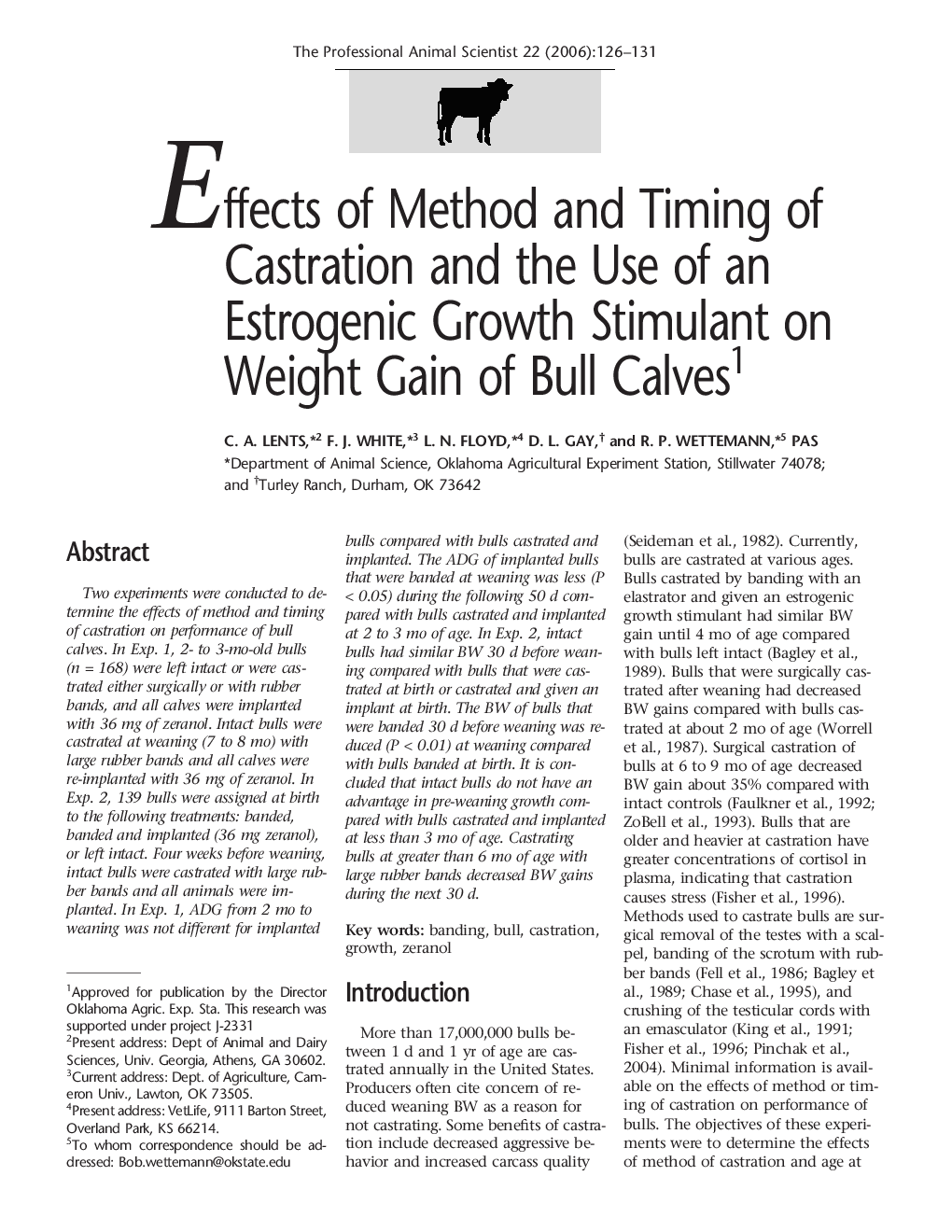| Article ID | Journal | Published Year | Pages | File Type |
|---|---|---|---|---|
| 2454551 | The Professional Animal Scientist | 2006 | 6 Pages |
Abstract
Two experiments were conducted to determine the effects of method and timing of castration on performance of bull calves. In Exp. 1, 2- to 3-mo-old bulls (n = 168) were left intact or were castrated either surgically or with rubber bands, and all calves were implanted with 36Â mg of zeranol. Intact bulls were castrated at weaning (7 to 8 mo) with large rubber bands and all calves were re-implanted with 36Â mg of zeranol. In Exp. 2, 139 bulls were assigned at birth to the following treatments: banded, banded and implanted (36Â mg zeranol), or left intact. Four weeks before weaning, intact bulls were castrated with large rubber bands and all animals were implanted. In Exp. 1, ADG from 2 mo to weaning was not different for implanted bulls compared with bulls castrated and implanted. The ADG of implanted bulls that were banded at weaning was less (P < 0.05) during the following 50 d compared with bulls castrated and implanted at 2 to 3 mo of age. In Exp. 2, intact bulls had similar BW 30 d before weaning compared with bulls that were castrated at birth or castrated and given an implant at birth. The BW of bulls that were banded 30 d before weaning was reduced (P < 0.01) at weaning compared with bulls banded at birth. It is concluded that intact bulls do not have an advantage in pre-weaning growth compared with bulls castrated and implanted at less than 3 mo of age. Castrating bulls at greater than 6 mo of age with large rubber bands decreased BW gains during the next 30 d.
Keywords
Related Topics
Life Sciences
Agricultural and Biological Sciences
Animal Science and Zoology
Authors
C.A. Lents, F.J. White, L.N. Floyd, R.P. PAS, D.L. Gay,
